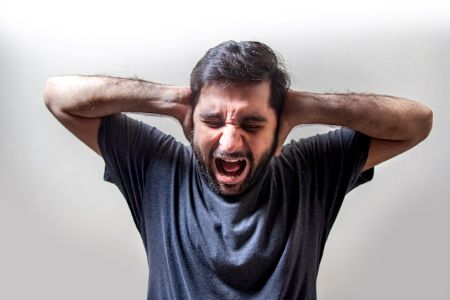Emotional Freedom Technique (or EFT) is a non-invasive, easy to learn tapping therapy which can be self-applied or used on others. Along with MBCT, EFT is a form of Somatic Therapy.
When being used in a therapeutic manner, it should be administered by a competently trained EFT Practitioner in regular supervision. It is becoming a very popular intervention for a range of psychological and physical issues and widely accepted in clinical settings.
You may hear EFT being referred to as ‘meridian therapy’, ‘tapping therapy’ or ‘energy psychology’.
It is often described as being similar to acupuncture but instead of using needles, the meridian points are gently tapped with the fingertips. EFT is a relatively new branch of complementary therapy that also utilises the mind/body* energy system to bring about positive changes in emotions, thoughts and behaviours.
How Do I Use EFT Tapping?
The origin of EFT goes back many 1000’s of years to acupuncture, acupressure and shiatsu. The earliest signs of acupuncture being used on humans can be traced back to 3,200 years BC.
In the 1980’s Dr Roger Callaghan came up with a complicated algorithm of tapping points to help cure his client Mary from a water phobia. In the early 1990’s, Gary Craig, an ordained minister and graduate of Stanford University, reduced the number of tapping points, found it to be just as effective as TFT and called it Emotional Freedom Technique (EFT).
How Does EFT Work & What’s The Science Behind It?
No-one can actually prove how EFT works as many scientists differ in their theories. “….When measured against the standards of the American Psychological Association’s Division 12 Task Force on Empirically Validated Treatments, EFT is found to be an “evidence-based” practice for anxiety, depression, phobias, and posttraumatic stress disorder (PTSD….” You can read the scientific articles from here.
If we first look at the neuroscience, this tells us that the prefrontal cortex (front part of the brain) the limbic system (located in the centre of the brain) and the brain stem (reptilian brain) are all inter-related. Depending on the individual, if someone experiences a traumatic or distressing event, adrenaline rushes through the body and the memory is imprinted into the amygdala, which is part of the limbic system. This effectively ‘dysregulates’ the nervous system. When the association between the memory and the stimuli (triggers) is re-activated by any of the 5 senses, it can often cause a disintegration of the limbic system affecting memory and also the right (emotional) brain and left (logical) brain.
The amygdala (we have two) is responsible for emotions and the hippocampus helps with the formation of new memories and the emotions that relate to them.
If you have ever been stung by a bee, your amygdala can sense the fear and the pain of the sting, and your hippocampus can help the sight of the bee, along with the pain and fear to be encoded into a memory.

This is really useful because the next time you see a bee or something similar to a bee, the image will be matched up with “things that can harm you” in your memory and you will feel enough fear to avoid the bee.
By gently tapping on the EFT tapping points (see above) it appears that the neural pathways are stimulated, sending signals between the sympathetic and parasympathetic regions of the brain to calm down the cortisol levels. Calming down the amygdala is essential as it’s a critical part of the brain’s limbic system. Research demonstrated that EFT reduced cortisol levels by 24%.
It is theorised that stimulating these points also causes a ‘cognitive shift’.
For instance, a phobic response to spiders would be replaced by a calm response and the physical sensations of distress (e.g racing heart, lumps in the throat or sensations in the pit of the stomach) are alleviated. Disturbed thoughts (such as catastrophic predictions) are normalized. Negative emotions (fear, panic, anger, confusion, etc.) are replaced by inner peace and calm. Unhelpful behavioural tendencies (flight or fight or freeze responses, for example) are corrected.
Is EFT Safe To Be Used On Trauma Or PTSD?
The EFT and Mindfulness Centre is listed on the PTSDUK website. The Centre has trained members of major mental health organisations, psychologists and counsellors. There are no known contraindications to using EFT, however, only qualified mental health professionals should apply EFT on those suffering from severe psychological disorders such as DID, schizophrenia etc.
You can read the case studies and clinical research papers that demonstrate how quick and effective EFT is with symptoms of trauma. At the EFT and Mindfulness Centre, we teach student how to identify and work with traumatic memories and we stress that even qualified Practitioners must only work within their levels of competence. Our EFT Practitioners are instructed to follow a Basic Trauma Protocol when working with symptoms of PTSD or C-PTSD and every effort is made during an EFT session to keep the client safe.
How Many Sessions Are Required?
For PTSD, the general consensus among clinicians is 16-20 of CBT sessions. With EFT, this number can be a lot less. When it comes to trauma or PTSD, people can respond differently when exposed to the same event. We also need to factor in the Practitioner’s training or what other modalities they introduce or whether they give the client some ‘homework’. All this can influence the number of sessions required.

Saying that, a qualified and trauma informed EFT Practitioner should be able to help reduce or ameliorate the symptoms of trauma (flashbacks, nightmares, anxiety, as well as uncontrollable thoughts about the event) within 5/6 sessions. Again, this is just a broad number and should not be quoted.
What Happens At An EFT Session?
The EFT Practitioner will go through the consultation/intake form with you and may gather other information to help decide on the best approach to use. If there are traumatic issues, the Practitioner will invoke the EFT and Mindfulness Centre’s ‘Basic Trauma Model’ and will assess your suitability to work through it. The Practitioner will instruct you on how to use the tapping points in a ‘monkey see, monkey do’ fashion as you repeat a phrase that’s associated with your problem. During the tapping procedure you may experience a sigh, a need to yawn or sneeze, tightness in different parts of the body or feel the emotion in your body.
You may also notice these emotions (or physical pain) move around your body as the healing takes place.
For a few days afterwards, EFT continues to work outside of the session so you may experience tiredness, flu like symptoms, exaggeration of emotions or lucid dreams. These are all good signs that the mind and body is releasing anything unwanted. Clients are advised to rest, drink plenty of water and generally be kind to themselves.
How Can EFT Help With Physical Issues?
It is well known that psychological and emotional stress in itself is linked to a variety of health problems, such as increased heart disease, compromised immune system functioning, and premature cellular and cognitive aging. Numerous studies published since 1960 demonstrate the efficacy of mind-body medicine techniques in lowering blood pressure and stress hormone levels, relieving pain and improving immune functioning, as well as improvements in clinical conditions such as HIV, cancer, insomnia, anxiety, depression and post traumatic stress disorder (PTSD).
Can EFT Be Used With Children For A Trauma?
The same EFT tapping protocol used with adults is also used with children. Children tend to be more responsive to EFT as they don’t have the same preconceptions. When using EFT on children it’s important to have an understanding of the signs and symptoms in young children and that the correct protocol needs to be in place. A child with PTSD may re-experience the traumatic event by having frequent memories of it (or in young children, re-enacting the event through play), having upsetting and frightening dreams, or developing repeated physical or emotional symptoms when reminded of the event. Children with PTSD may also show symptoms such as loss of interest in daily activities; headaches, stomach aches, or other physical symptoms; excessive worry; and sleep or concentration problem. EFT can assist here.
Want To Learn More?
The international best selling book ‘EFT for Dummies’ is available in several languages and can be purchased from Amazon and all good book stores. It contains a wealth of information plus ideas on how to use EFT on a wide variety of issues.
If you would like to find a qualified and Accredited EFT Practitioner or want to take an accredited EFT course, please visit out website.
Disclaimer
The information on EFT is not meant to diagnose, treat, prevent, or cure any medical condition, and should not substitute professional medical advice, diagnosis , or treatment. Please consult a qualified medical professional before beginning any healing process or any treatment for a medical condition. EFT is a self-help technique and the user holds full responsibility for the results.
What Experts Say About EFT
“I don’t think I could do the practice I do anymore if I couldn’t tap anymore. Tapping is a very important part of my world because it helps people to stay within the window of tolerance. Of course, the big thing is people either go to the roof and become hyper or they shut down and become hypo. Tapping is one very nice way to get people to even keel. So I teach everybody who comes to see me who has a serious trauma history, we start by tapping..…Bessel Van der Kolk Trauma expert
“EFT is the single most effective tool I’ve learned in 40 years of being a therapist.” Dr. Curtis A. Steele (psychiatrist).
“At our clinic we are presently using EFT to help patients overcome negative emotions that undermine health, and to eliminate many forms of pain. We also use it to reduce food cravings that can sabotage healthy eating programs, and to implement positive life goals to support optimal health and well being…Of the thousands we have studied and used in 20 years of practicing medicine, EFT is the greatest healing technique that exists. EFT is now a major component of our treatment program.” Dr. Joseph Mercola, Director, Natural Health Center, Chicago, Illinois;
“In my 50 years as a practicing psychiatrist, EFT has proven to be one of the most rapid and effective techniques I’ve ever used” Henry Altenberg, MD
“Some day the medical profession will wake up and realize that unresolved emotional issues are the main cause of 85% of all illnesses. When they do, EFT will be one of their primary healing tools…as it is for me.” Eric Robins, MD
“I’ve used Tapping for years and highly recommend it!” Joe Vitale, Bestselling author and one of the stars of the hit movie “The Secret””
“EFT is destined to be the top healing tool for the 21st century.” Cheryl Richardson, Author of “Stand Up for Your Life,” “Take Time for Your Life” and “Life Makeovers” – Expert personal coach and lecturer
“EFT offers great healing benefits“ Deepak Chopra, Bestselling author of more than fifty books and co-creator of the Chopra Center
“What’s interesting about EFT is that it is a process that really, in some sense engages… like super learning and super learning is like pushing the record button on the subconscious mind.” Bruce Lipton, Author of “The Biology of Belief” – Internationally recognised speaker in bridging science and spirit.
Main – Photo by Aditya Saxena on Unsplash




